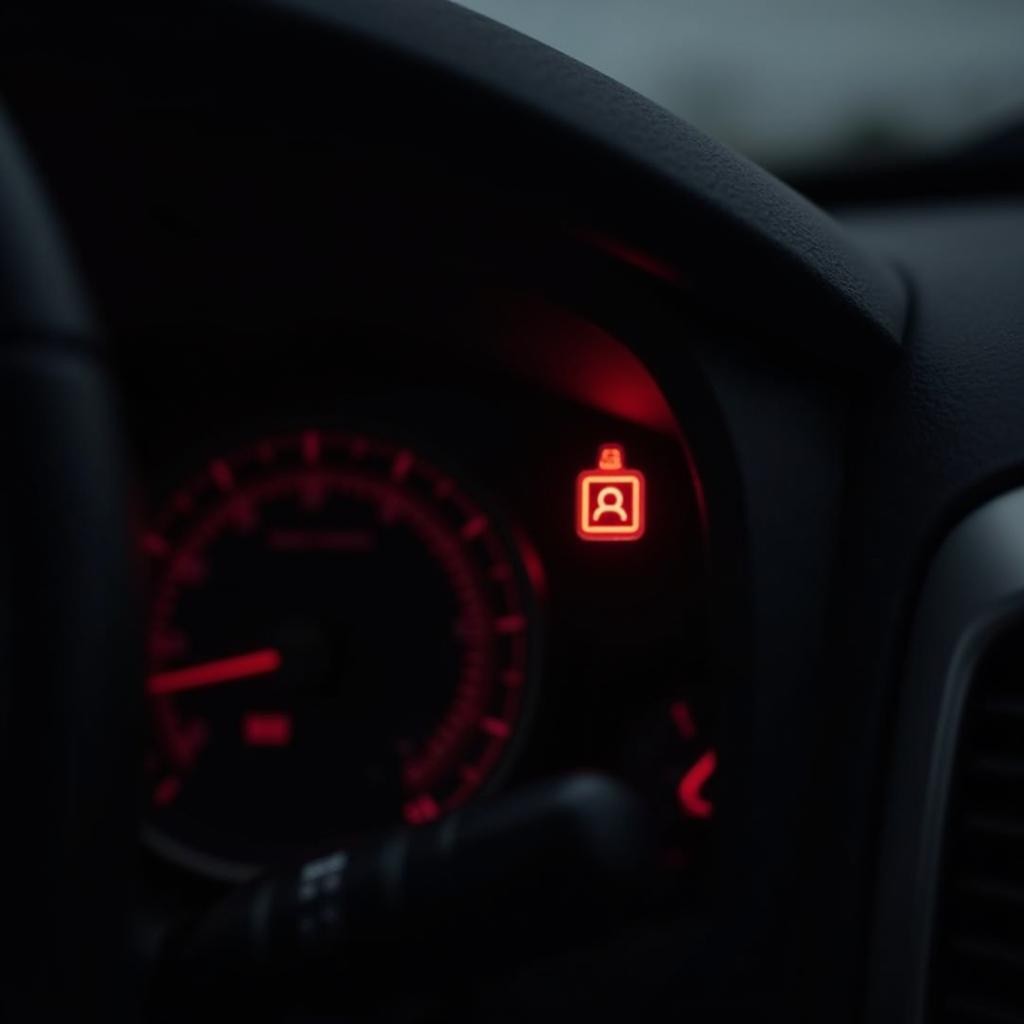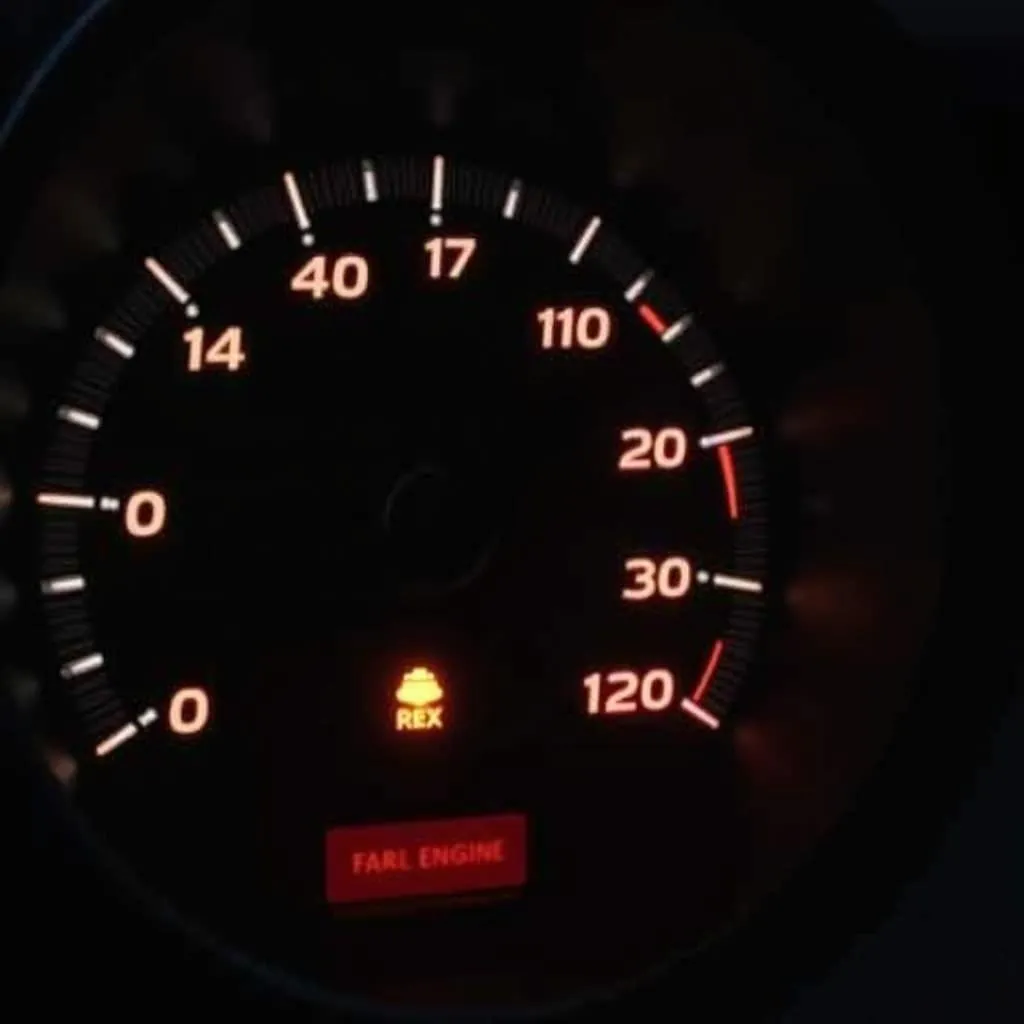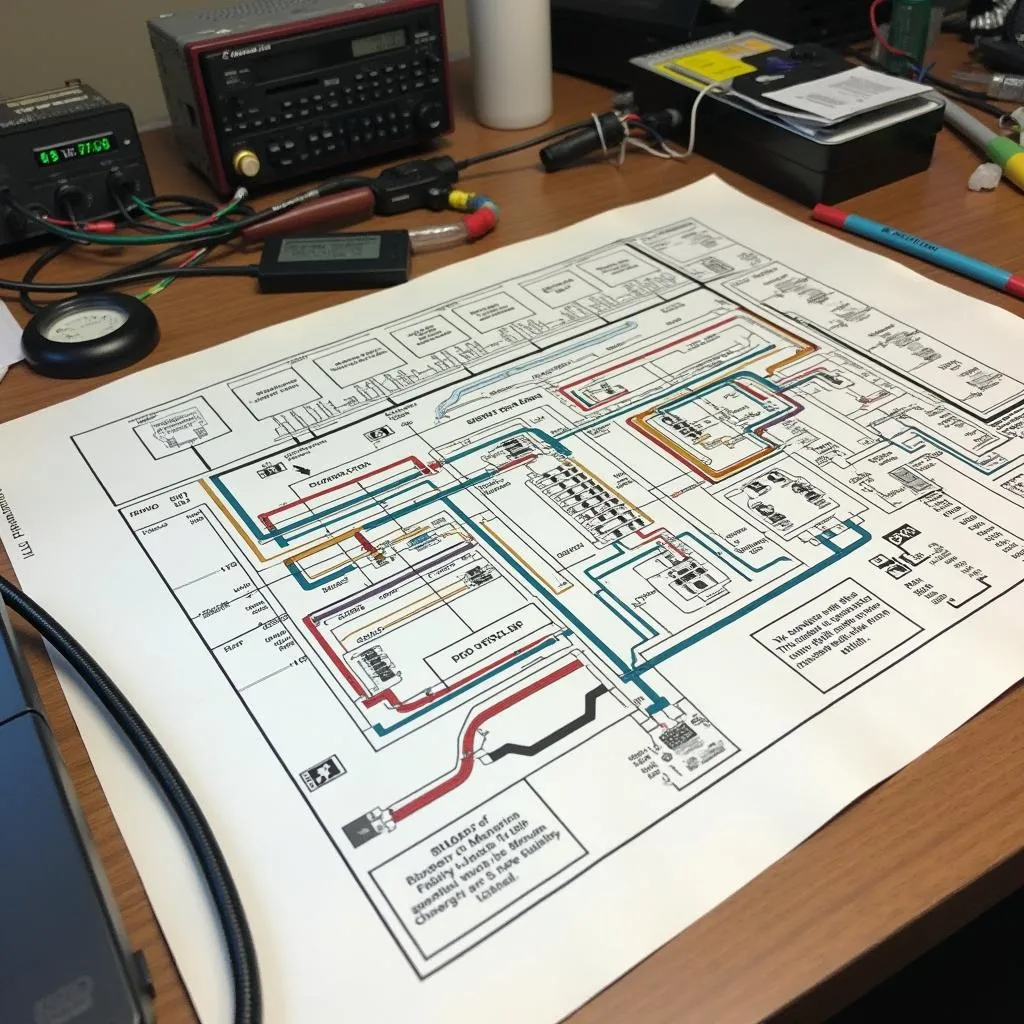The familiar chime of the seat belt warning sound is a ubiquitous reminder to buckle up. But have you ever wondered when this safety feature was first introduced in cars? This article delves into the history of the seat belt warning sound, exploring its evolution and impact on automotive safety.
 Car dashboard with illuminated seatbelt warning light
Car dashboard with illuminated seatbelt warning light
The first iterations of seat belts can be traced back to the early days of automobiles. However, these early versions were often rudimentary and not widely adopted. The concept of a dedicated warning system to encourage seat belt use emerged later.
When Did the “Fasten Seat Belt” Chime Become Mandatory?
In the United States, the National Highway Traffic Safety Administration (NHTSA) played a pivotal role in mandating seat belt warning systems. In 1968, the agency required all vehicles to be equipped with lap belts and shoulder harnesses in the front seats. However, it wasn’t until the 1970s that regulations regarding seat belt warning systems began to take shape.
In 1972, the NHTSA mandated an interlock system that prevented a vehicle from starting unless the driver and front passenger had fastened their seat belts. This system, while effective in increasing seat belt usage, faced significant pushback from the public and was short-lived.
By 1974, the interlock mandate was dropped in favor of a less intrusive approach: the seat belt warning light. This initial iteration was a visual cue – a light on the dashboard that illuminated when the seat belt was unfastened.
The auditory seat belt warning, the now-familiar chime, was introduced later as an additional layer of prompting. While the exact year of its introduction varied slightly across car manufacturers, it became a standard safety feature in most vehicles by the mid-to-late 1970s.
The Evolution of the Seat Belt Warning Sound
Over the years, the seat belt warning sound has evolved from a simple buzzer to more sophisticated chimes and tones. Some vehicles even feature voice alerts that remind passengers to buckle up.
The duration and intensity of the warning sound have also been subject to regulations and technological advancements. Early systems often featured continuous buzzing sounds until the seat belt was fastened, which could become irritating for drivers. Modern systems typically employ intermittent chimes or tones that gradually increase in intensity if the seat belt remains unfastened.
The Impact of Seat Belt Warning Systems
Seat belt warning systems have undoubtedly played a significant role in increasing seat belt usage and reducing traffic fatalities. The NHTSA estimates that seat belts saved over 15,000 lives in 2017 alone. The combination of visual and auditory cues serves as a constant reminder for drivers and passengers to prioritize safety.
The effectiveness of seat belt warning systems extends beyond their initial purpose. Studies have shown that these systems also contribute to increased awareness of other safety features in vehicles, encouraging drivers to adopt safer driving habits overall.
The seat belt warning sound, though a seemingly small detail in the grand scheme of automotive technology, represents a significant step towards improving road safety. As technology continues to evolve, we can expect further advancements in seat belt warning systems, ensuring that the message of “buckle up” remains loud and clear.


